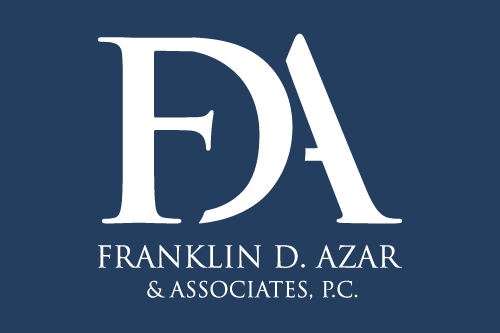DEALING WITH PTSD AFTER A CAR CRASH
Ask any emergency room doctor, and they’ll tell you that the injuries suffered in a car accident may not all be as broken bones or cuts. Some people may also experience emotional or psychological trauma from the crash. A study conducted by the National Institute of Mental Health indicates that up to 40 percent of motor vehicle crash survivors experience at least some symptoms of post-traumatic stress disorder (PTSD) — a condition that, if left untreated, can get worse rather than better with the passage of time.
WHAT IS PTSD?
Post-traumatic stress disorder may occur in people who have experienced or witnessed a traumatic event, such as a natural disaster, combat, a serious accident, or a threat of death or serious injury. People with PTSD report having intense, upsetting thoughts and feelings that persist long after the traumatic event is over. Once known as “shell shock” or “combat fatigue,” PTSD affects approximately 3.5 percent of U.S. adults annually. An estimated one out of eleven people will be diagnosed with PTSD at some point in their lifetime.
SIGNS OF PTSD
From movies and television, we’re accustomed to thinking about PTSD as an occupational risk for soldiers going into battle, and possibly as a hazard for first responders. But it only takes a single traumatic incident to trigger the disorder, and the six million traffic accidents that occur in America every year are the leading cause of PTSD in the general population. Some of the signs that you may be experiencing PTSD after a crash include:
- A surge of anxiety when getting behind the wheel of a car, or a fear of driving or being driven
- Frequent flashbacks (or “intrusive thoughts”) of the accident
- Nightmares or insomnia
- Avoidance of places or people that remind you of the crash
- Sudden rages, crying spells, or other abrupt mood swings
- Feelings of depression, isolation, shame, or despair
- Disruption of relationships and work routines
Some of the symptoms listed above are encountered by many people in the aftermath of a crash, especially if they feel at least partly responsible for the incident. But if the behavior persists for more than a few weeks, you should consult a medical professional about what you’re going through. Although there is no sure-fire “cure” for PTSD, there are several approaches to treatment that can help manage symptoms and allow patients to move on with their lives. Some combination of medication and cognitive therapy is often recommended.
PTSD AND YOUR INJURY CLAIM
If you are diagnosed with PTSD after a crash caused by another driver, you may well have a claim for medical expenses related to your PTSD treatment, as well as claims for lost wages and emotional suffering related to the condition. However, insurance companies are often skeptical of mental health claims related to car accidents; it’s important to have an experienced personal injury attorney on your side who is prepared to substantiate your claim.
Since the average juror is not qualified to assess your condition, proving that you have PTSD because of the accident often involves enlisting the aid of expert witnesses. Your attorney’s ability to present the facts of the case and your symptoms, your record of treatment or therapy, and credible expert testimony will play a large role in successfully resolving your claim.
SAFETY FEATURES TO LOOK FOR IN YOUR NEXT CAR
Car buyers have not always been quick to seize on new safety innovations. Consider the seat belt, arguably the single greatest life-saving invention in the history of auto travel. Although seat belts have been around since the early 20th century, for many years motorists didn’t want them, convinced that they would make it harder to escape if their vehicle caught on fire or plunged into water. Buyers were also leery of airbags when they were first introduced.
But in the past two decades a flood of new technology has surged through the auto business, presenting consumers with many new options designed to make driving easier and safer. Some of these developments — including antilock brakes, traction control, and special anchors for child safety seats — have become mandatory for all new passenger vehicles.
We’ve zeroed in on some of the most in-demand and useful new safety features below — all of them so helpful that you’ll wonder how you ever got by without them before.
AUTOMATIC EMERGENCY BRAKING
If a collision seems imminent and the driver isn’t slowing down, the AEB sensors will engage the brakes. Studies indicate such a system can lower the likelihood of a rear-end collision by as much as 50 percent — and nudge drowsy or distracted drivers to pay more attention to what’s right ahead of them.
FORWARD-COLLISION WARNING
While an AEB system takes over the brakes, a forward-collision system uses cameras, radars, or other sensor devices to detect objects that appear unexpectedly in your path — from abruptly stopped traffic to pedestrians to loose animals — and issues a visual, audible, or vibrating warning of an impending collision.
BLIND SPOT MONITORING
The monitoring system, using radar or video, picks up those vehicles hanging out in areas that your own side and rearview mirror checks might miss. Handy for insuring safe lane changes, particularly for larger vehicles. Some systems will automatically adjust speed and position to put distance between you and the lurker.
LANE-KEEPING SYSTEMS
Some of these systems beep at you when you start to drift out of your lane; others take the wheel and gently correct your course. Either way, it’s a winning situation for avoiding sideswipes.
REAR CROSS-TRAFFIC ALERT
Backup cameras have become standard issue, but this is an improvement, providing a wide electronic sweep on either side of the vehicle as you’re backing out of a driveway or parking space. An approaching vehicle that enters the cross-traffic area triggers a visual or audible alert. Considering how many fender benders occur in parking lots with tough sightlines, this can be a major aggravation-saver.
INVESTING IN TROUBLED TIMES: TIPS FROM THE SEC
These are difficult times for investors, what with pandemic scares, supply chain shortages, the specter of inflation, and so many other factors causing volatility at every turn. Is it time to diversify, retrench, double down on risk, or start stuffing cash in a spare mattress?
No investment strategy is guaranteed to be successful in all conditions. But investor advice provided by the U.S. Securities and Exchange Commission is a good place to start if you are evaluating your portfolio and considering your next move. The SEC’s common-sense tips don’t try to steer you into any single approach to investing, but they do encourage you to consider what your investment goals are and the best way to achieve them. Here are some important basics.
- Define your goals. Whether you’re doing this on your own or with the help of a financial planner, the first order of business is draw up a financial plan — a hard look at your current assets and expected sources of income, what level of financial security you hope to achieve over time and how you expect to get there. Putting actual numbers to your goals is a big step and will help shape your investment strategy.
- Know your comfort zone. Younger investors with a long-term horizon for their financial goals tend to tolerate more risk in exchange for the potential for a greater investment return. If the investment is for a shorter period, it may be preferable to rely on more conservative assets, such as certificates of deposit, rather than stocks or bonds. The federal government has tools such as BankFind Suite available if you need to verify whether certain savings accounts are insured by the FDIC.
- Spread the risk around. A solid portfolio typically has investments in more than one of the three major asset categories — stocks, bonds, and cash. Developing an appropriate mix of investments can help smooth out the market ups and downs, countering losses in one category with gains in another. So-called “lifecycle funds,” a diversified mutual fund that shifts toward more conservative investments as the investor approaches retirement age, provide a way to automatically adjust the risk level to reflect the investor’s situation.
- More eggs, more baskets. Diversifying is also a way of avoiding too much “exposure” in a single investment — for example, investing too heavily in your employer’s stock, or any one company’s stock. You don’t want to be left holding that one basket if your company of choice takes a nosedive.
- An emergency cash fund for peace of mind. The pandemic has taught us all how quickly jobs can disappear or turn into an indefinite furlough. To avoid having to raid long-term investments (and risking penalties), it’s a good idea to have a reserve in a savings product for emergencies. How much? Six months of income in basic savings seems to be a good benchmark, enough to possibly stave off foreclosure and other disasters.
- Don’t overlook the “free money.” If your employer’s retirement plan offers a match to some or all of your contributions, it makes sense to take advantage of that. In many instances, a workplace plan is one of the easiest and effective ways to save for retirement. At the same time, you should take a close look at the fees and costs of your employer’s plan to determine if the plan is right for you.
- Tune up as needed. Changing market conditions, or changes in your long-term plan, may require you to revisit and tweak your approach occasionally. This should not be done impulsively, in reaction to a single sell-off or market jitters — but if a particular strategy isn’t working or your portfolio needs to be “rebalanced,” don’t consider any strategy so foolproof that it can’t be improved.
- If it’s too good to be true, it probably isn’t true. The SEC recommends that investors approach any “hot” new investment with skepticism. Always take the time to do your own research and ask lots of questions before investing.
Colorado Personal Injury Attorneys
For more than thirty years the attorneys at Franklin D. Azar & Associates have helped thousands of injured people obtain complete and timely compensation for their losses. Our proven track record and expertise have allowed us to grow into the largest personal-injury law firm in Colorado, with offices in Denver, Aurora, Thornton, Fort Collins, Greeley, Grand Junction, Colorado Springs, and Pueblo. If you’ve been injured in a bus, car, truck, or motorcycle accident, you may be entitled to compensation. Please call the car accident attorneys at FDAzar day or night at 800-716-9032, or contact us here for a free consultation and no-obligation evaluation of your case.
Join Frank Azars Monthly Newsletter
"*" indicates required fields




